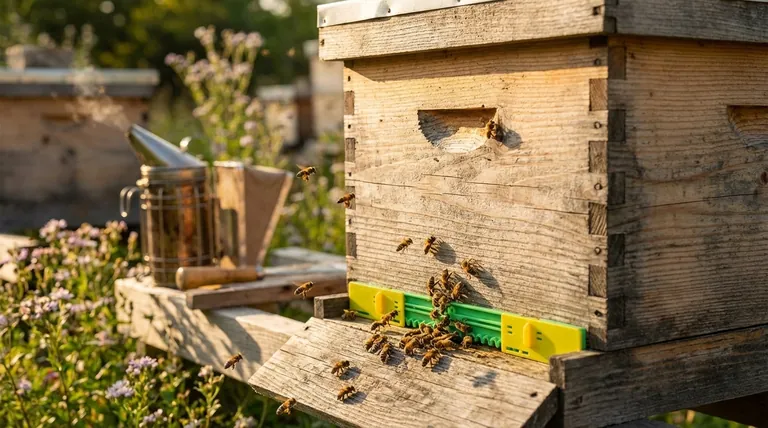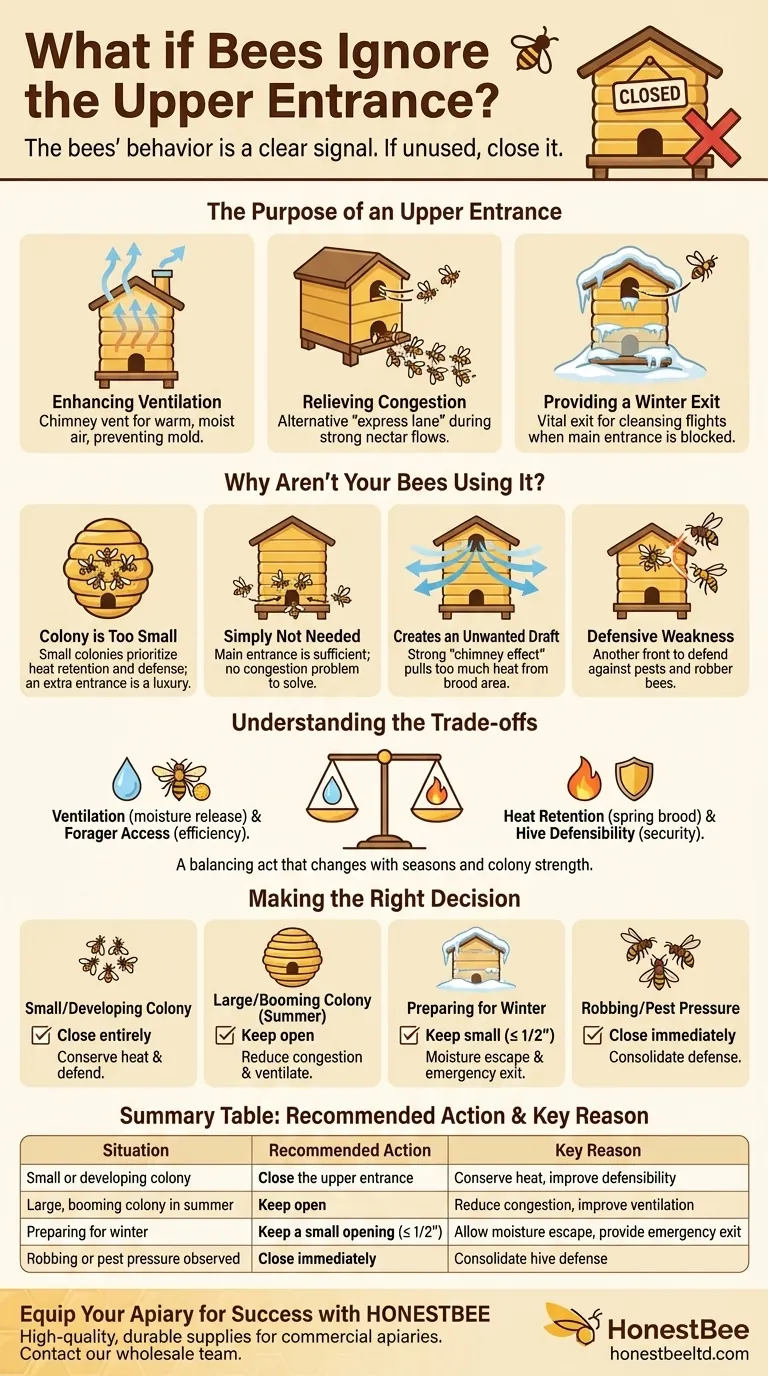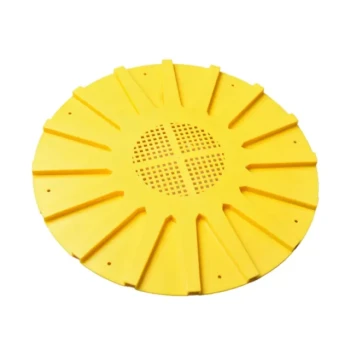In short, if your bees are not using the upper entrance, you can and often should close it. The bees’ behavior is a clear signal that the entrance is either not needed or is actively hindering them by creating a draft or a defensive liability.
The decision to open or close an upper entrance is not a rule, but a response. The bees' lack of use is valuable data, telling you that the potential benefits of the entrance—like ventilation or reduced congestion—are currently outweighed by the costs of heat loss and defensibility.

The Purpose of an Upper Entrance
To understand why your bees might be ignoring an upper entrance, you must first understand its intended functions. It is a management tool, not a mandatory component.
Enhancing Hive Ventilation
An upper entrance acts as a chimney vent. It allows warm, moist air—a byproduct of the bees' respiration and the process of curing nectar into honey—to escape the hive. This is especially critical for preventing condensation and mold.
Relieving Traffic Congestion
During a strong nectar flow, a populous hive can experience significant traffic jams at the main entrance. An upper entrance provides an alternative "express lane" for foragers, increasing the efficiency of the colony's operations.
Providing a Winter Exit
In cold climates, the main entrance can become blocked by snow, ice, or an accumulation of dead bees. A small upper entrance ensures the colony can still take vital cleansing flights on warmer winter days.
Why Aren't Your Bees Using It?
If the bees are avoiding the upper entrance, they have a good reason. Their behavior is a direct indicator of the colony's current state and needs.
The Colony is Too Small
A small or newly established colony has two primary jobs: raising brood and defending its limited resources. An extra entrance requires more guard bees and allows precious heat to escape from the brood nest, making it an unaffordable luxury.
It's Simply Not Needed
If the colony is of moderate size and the nectar flow is average, the main entrance is likely sufficient. The bees will not use a secondary entrance if there is no congestion problem to solve.
It Creates an Unwanted Draft
Bees are masters of thermoregulation. An open upper entrance can create a "chimney effect" that is too strong, pulling too much heat out of the brood area. The bees may abandon it or even try to seal it with propolis to maintain a stable temperature.
It's a Defensive Weakness
A second entrance is another front to defend against robbing bees, wasps, and other pests. If the colony feels vulnerable or is under pressure from invaders, it will consolidate its defense around a single, more manageable entrance.
Understanding the Trade-offs
Managing an upper entrance is a balancing act. Each decision comes with clear advantages and disadvantages that change with the seasons and the colony's strength.
Ventilation vs. Heat Retention
The primary trade-off is between releasing moisture and retaining heat. In a humid summer or damp winter, ventilation is key. For a small colony trying to expand its brood nest in the spring, heat retention is the priority.
Forager Access vs. Hive Defensibility
An open entrance can boost foraging efficiency in a booming colony, directly contributing to a larger honey crop. However, for a weaker hive, that same opening is a security risk that can lead to it being robbed and destroyed.
Making the Right Decision for Your Hive
Use the bees' behavior as your guide. Your decision to open, close, or reduce the size of the upper entrance should be based on the specific needs of the colony at that moment.
- If you have a small or developing colony: Close the upper entrance entirely to help them conserve heat and defend their home more easily.
- If you have a large, booming colony in summer: Keep it open to reduce congestion at the main entrance and improve ventilation for nectar curing.
- If you are preparing for winter: Keep a small (1/2" or less) upper entrance open to allow moist air to escape and provide an emergency exit if the bottom gets blocked.
- If you observe robbing or pest pressure: Close the upper entrance immediately to reduce the area your guard bees must defend.
Ultimately, managing your upper entrance is about responding to the clear signals your colony provides.
Summary Table:
| Situation | Recommended Action | Key Reason |
|---|---|---|
| Small or developing colony | Close the upper entrance | Conserve heat, improve defensibility |
| Large, booming colony in summer | Keep open | Reduce congestion, improve ventilation |
| Preparing for winter | Keep a small opening (≤ 1/2") | Allow moisture escape, provide emergency exit |
| Robbing or pest pressure observed | Close immediately | Consolidate hive defense |
Equip Your Apiary for Success with HONESTBEE
Mastering hive management requires the right tools. At HONESTBEE, we supply commercial apiaries and beekeeping equipment distributors with high-quality, durable supplies designed for professional beekeeping operations. From ventilated inner covers to precision-built hive bodies, our wholesale-focused products help you respond effectively to your bees' needs.
Let's build a stronger, more productive operation together. Contact our wholesale team today to discuss your equipment needs and get a quote.
Visual Guide

Related Products
- Multi-Functional Sliding Hive Entrance for Beekeeping
- Professional Reversible Beehive Hive Entrance
- Beehive Entrance Reducer Guardian Metal Hive Entrance for Bees
- Multi-Functional Rotary Hive Entrance Disc for Beekeeping
- Beehive Entrance Discs Plastic Bee Entrance Disc for Bee Hives
People Also Ask
- How do bees manage debris with a small hive entrance? A Guide to Strategic Hive Management
- How does entrance configuration vary seasonally for beekeepers? A Guide to Year-Round Hive Health
- Why is a smaller entrance size beneficial for a beehive? Boost Hive Defense & Productivity
- What is the purpose of placing an object in front of the hive entrance after a move? A Guide to Forced Reorientation
- How does the sliding design of the entrance reducer benefit beekeepers? Achieve Ultimate Hive Control


















